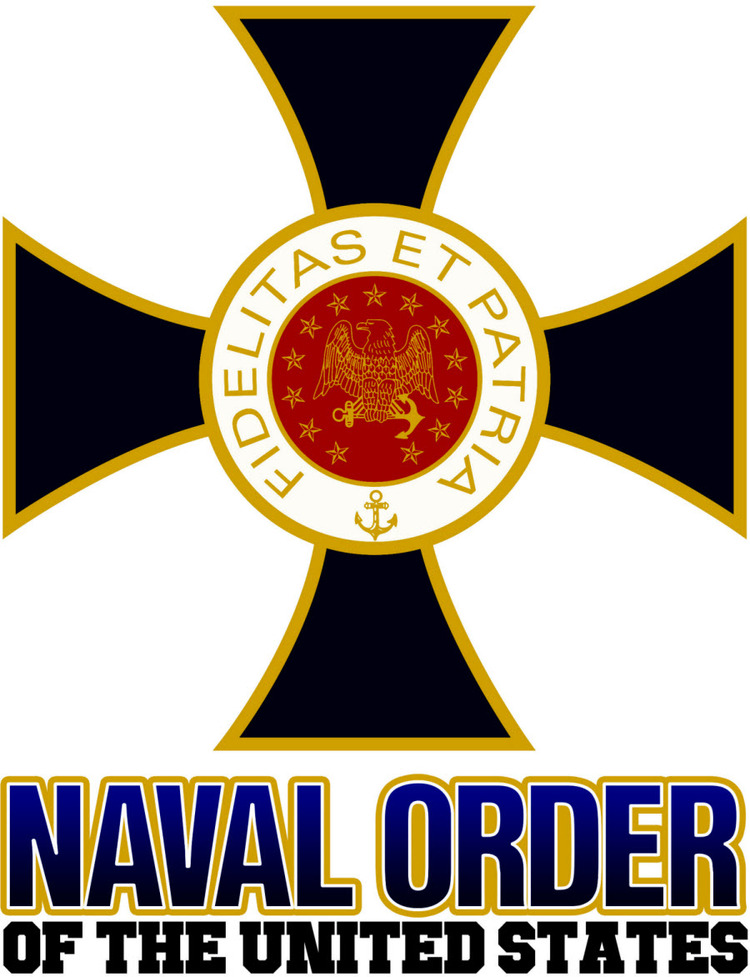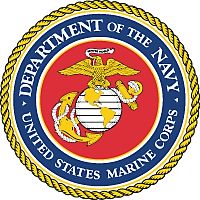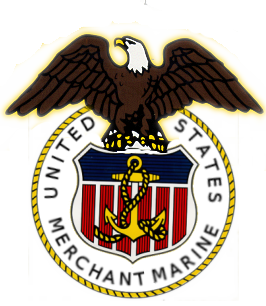National History Day Winner 2021 - Jack Brown
“Operation Ivy Bells”
After learning that this year’s National History Day theme would revolve around communication, I knew that I wanted to cover something related to espionage during the Cold War. I was intending to create a project based around the various communication methods used by famous spies in order to communicate their findings to their mother nations, but that theme was scrapped early on due to the lack of information yielded by the research I had done. After days of thorough research, I came across some articles on Cold War wiretapping, which eventually led me to Operation Ivy Bells.
After discovering the initial articles on the subject, I began scouring Google for any information I could find about Operation Ivy Bells. As I collected resources, I noticed that a large amount of the information on the missions was still classified to the general public, and I found it increasingly difficult to find credible sources. Nevertheless, I continued my research on the topic and was able to find articles on the events of the campaign, blueprints for the submarines that were used during the operations, and even interviews with some of the divers that participated in the missions themselves. In the end, there was just enough information available to the public eye to enable me to create this project.
I decided early on that I would be working alone this year, so I eventually concluded that I would create a website. I had all of the necessary information available to me, so it was only a matter of learning how to use the NHD website builder and making the site look presentable. Using the works of previous NHD winners as examples, I was able to learn how the program worked through experimentation, trial and error, and various guidebooks. Through this, I was able to give my website a simplistic, yet professional aesthetic.
Operation Ivy Bells fit this year’s theme of “Communication in History” in that it deals with the interception and utilization of communicated information. By the time World War II ended, the two global superpowers that were still standing were suspicious of each other’s activities. The American government jumped at a chance to gain the upper hand over the Soviets, who were equally as afraid of another global conflict as the Americans were, and created Operation Ivy Bells as a means through which to gather information. Using wiretaps and highly advanced rebreather equipment, the U.S. government was able to uncover a treasure trove of private Soviet data, which was eventually used to help ease the tension between the rival nations. Operation Ivy Bells was important in that without it, the Cold War could have either lasted even longer than it already did, or escalated further into a worldwide conflict.
Jack Brown
Senior Individual Website
Word Count: 1200 words
Process Paper Word Count: 471
THE COLD WAR
USS Halibut (Koscak)
With the end of World War II in 1945, only two global superpowers remained in the world: The United States of America, and the Union of Soviet Socialist Republics (USSR). Tensions rose between the two nations; the rival nations resorted to espionage campaigns, thus beginning “The Cold War”. As this passive-aggressive information war continued, both nations developed highly advanced methods of gathering, spreading, encrypting, and decrypting foreign intelligence.
THESIS
The United States espionage campaign known as Operation: Ivy Bells, in which wiretaps were secretly placed on Soviet undersea communication lines, gave the U.S. unencrypted information on Russian nuclear strike capabilities, which ultimately led to the completion of the SALT II Treaty and indirectly had a hand in ending the Cold War.
A PERILOUS GAMBIT
U.S.S. Halibut (Sutton)
The combined efforts of the Central Intelligence Agency (CIA), United States Navy, and the National Security Agency (NSA) produced one of the most dangerous and ambitious covert submarine operations in history in an effort to gain the upper hand in the rapidly evolving information war.
Sea of Okhotsk (Einstein)
In 1971, Captain James Bradley pitched his idea to intercept information from Soviet communication lines in the Sea of Okhotsk via wiretapping. The Soviet Navy had established a high-priority, nuclear-armed submarine base at Petropavlovsk on the Kamchatka Peninsula, and Bradley believed that there was a communication line that ran from the remote base to Moscow’s Pacific Fleet headquarters in Vladivostok, Russia. Targeting the Sea of Okhotsk was a high-risk gambit, as the Soviet Union had forbidden other vessels from entering through constant patrolling and underwater sound detection devices. Additionally, there was no clear-cut evidence that there was a cable there to begin with.
Illustrations of 'Abalone' Rebreathers (Sutton)
Nevertheless, the American intelligence agencies jumped at the chance of any advantage over their adversary, and began developing plans to wiretap the alleged Soviet communication lines. In 1972, Bradley dispatched the U.S.S. Halibut to Kamchatka to find the Russian communication line. The team was able to narrow down their search time significantly thanks to posted signs on the Siberian coastline warning ships not to lay anchor. Equipped with heavily modified rebreather equipment, the specially-trained saturation divers plunged into the icy depths in search of the line. Despite the physical risks, they uncovered the 3-inch wide cables at approximately 400 feet below sea level, only 120 miles off the Russian coastline. After attaching the 20-foot-long listening and recording device, the Halibut was able to eavesdrop on Soviet military information being sent between the two Navy bases completely undetected.
Inner-workings of U.S.S. Halibut (Sutton
AN INFORMATION GOLDMINE
Through the raw, unencrypted tape recordings recovered by the U.S.S Halibut, the United States was able to gain knowledge of the Soviet’s nuclear strike capabilities and limitations, as well as the rival nation’s recent tactical movements, which allowed them to gain an informational advantage over the USSR.
Sperry UNIVAC 1224 Computer Model (The Computer Museum)
After recording as much information as physically possible, the Halibut returned to America. Upon receiving the tapes, NSA intelligence analyzed the recordings for vital information, and found that most of the sensitive details were completely unencrypted. The Halibut’s tapes proved to be invaluable in gaining the upper hand over the Soviets.
NSA cryptologists uncovered a wealth of private information, from Soviet submarine operations and ballistic missile development plans, to personal phone calls and messages to loved ones. The Soviets, unaware of their tapped communication lines, were handing their most well-guarded secrets to them on a silver platter. With this influx of foreign intelligence, the U.S. would be able to continue negotiating peace with the Soviets.
The Secret Mission to Tap Soviet Undersea Cables, Dark Docs
SUCCESSFUL NEGOTIATIONS
Signing of the SALT II Treaty, Vienna, 1979 (Fitz-Patrick)
The United States was only able to successfully negotiate terms for strategic arms limitations with the USSR during the SALT II discussions because of the information obtained via wiretapping the Soviet’s communication lines.
From the Operation Ivy Bells tapes, government officials were able to glean a ground-breaking truth: The Soviets were just as afraid of war as them, equipping American negotiators to deal with Soviet affairs during the second round of Strategic Arms Limitation Talks (SALT II).
American MIRV Missile (Mark Franklin Arts)
Their primary goal was to ease tensions between the nations and prevent the further production of Multiple Independently Targeted Re-Entry Vehicles (MIRV) by either country. With the completion of the SALT II treaties, and the subsequent limitations on nuclear armaments resulting from the agreements, submarine espionage became more commonly utilized in the remaining years of the Cold War.
A NEW AGE OF ESPIONAGE
The success of Operation Ivy Bells encouraged the use of wiretapping throughout the rest of the Cold War and beyond, allowing the United States to gain an advantage over both the Russians and any other potential adversaries.
Operation Ivy Bells missions continued unearthing an information goldmine from the unprotected Soviet cables, and America began to utilize both submarines and wiretapping in foreign espionage campaigns more regularly. Four years after the first Ivy Bells mission, the Halibut was decommissioned, and the U.S.S. Seawolf and U.S.S. Parche rose to take its place.
U.S.S. Parche (Sutton)
U.S.S. Parche (Sutton)
The Parche, in particular, received nine Presidential Unit Citations, ten Navy Unit Commendations, and thirteen Navy Expeditionary Medals throughout its lifetime. Although the reasons for which it received these honorary marks remain classified to the general public, it can be inferred that the vessel successfully fulfilled its role as an espionage vessel during Operation Ivy Bells missions.
U.S.S. Parche Awards (Sutton)
A CRIPPLING BETRAYAL
Okhotsk Wiretap removal, 1981 (SIGINT CHATTER)
If not for the betrayal of Ronald Pelton, an NSA analyst turned Russian mole, Operation Ivy Bells would have continued its regular missions and provided the United States with even more information regarding Russian military movements.
In 1981, satellites depicted Russian warships escorting a salvage ship towards the location of the tapped cable in the Sea of Okhotsk. When U.S.S. Parche was sent on one of its biannual missions to retrieve and repair the listening device, the divers discovered that the six-ton, twenty-foot-long wiretap had been removed. After the Parche’s return to America, the NSA began an in-depth analysis of how the Soviets could have found out about Operation Ivy Bells.
Ronald Pelton arrest (FBI)
The truth wouldn't be uncovered until July, 1985, when KGB defector Vitaly Yurchenko accused Pelton as the mole who compromised the decade-long espionage campaign. In 1981, a debt-ridden Pelton made a phone call to the Soviet Embassy in Washington, offering them top-secret government information in exchange for financial compensation. Pelton sold details about Operation Ivy Bells for $5000, and was later paid $30,000 for further consultation. Pelton’s betrayal put an end to one of the most successful espionage campaigns in history.
FUTURE IMPACT
Ronald Reagan, Berlin, Germany, 1987, (AP Photo)
The information provided by Operation Ivy Bells helped create foreign policies moving forward that helped ease the tension between the Soviet Union and the United States through the political figures in place.
"I understand the fear of war and the pain of division that afflict this continent-- and I pledge to you my country's efforts to help overcome these burdens. To be sure, we in the West must resist Soviet expansion. So we must maintain defenses of unassailable strength. Yet we seek peace; so we must strive to reduce arms on both sides."
- Ronald Reagan, 1987
In 1987, U.S. President Ronald Reagan gave his famous Berlin Wall speech, in which he appeals to the Soviet General Secretary, Mikhail Gorbachev, acknowledging the fear within both nations. Reagan was aware of the Okhotsk recordings revealing that the Soviets were afraid of another instance of global warfare. Operation Ivy Bells made this possible.
RESOURCES
National History Day®(NHD) is a non-profit education organization based in College Park, Maryland. NHD sponsors the National History Day Contest that encourages more than half a million students around the world to conduct historical research on a topic of their choice. Students enter these projects at the local and affiliate levels, with top students advancing to the National Contest at the University of Maryland at College Park.
The Naval Order of the United States supports this program through its individual Commanderies. It seeks to encourage historical research in the areas of maritime, naval and Marine Corps history. The San Francisco Commandery supports the NHD program in the San Francisco Bay Area and Northern California, and offers up to $300 per year in awards to students whose projects excel at the state level competition. Students start their projects in their individual schools, and then compete through a series of local and county competitions to win the opportunity to compete at the state and then national level.
Start your inquiry about National History Day California at https://www.nhdca.org for the latest NHS news and information.
Home • Leadership Lessons • Who We Are • Donate • Contact







